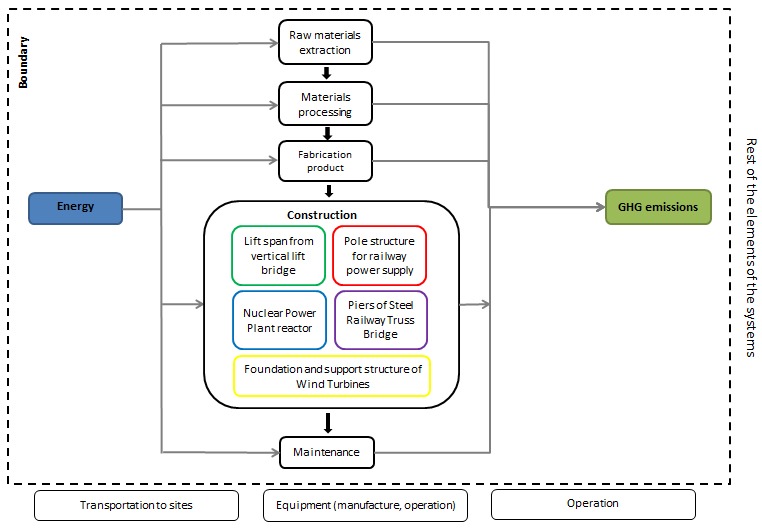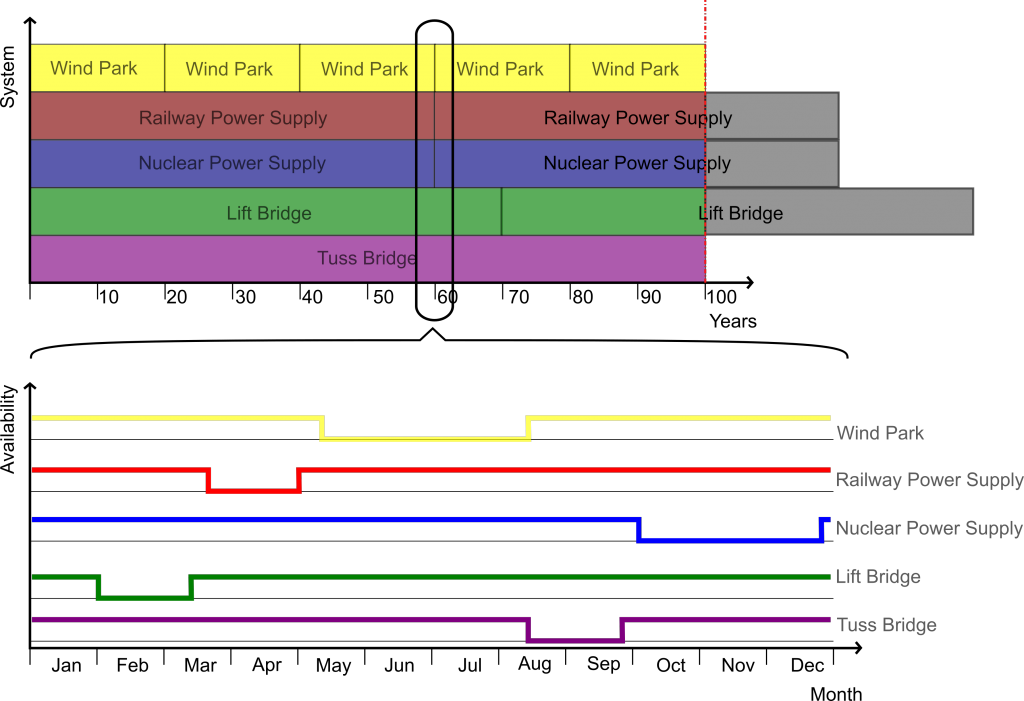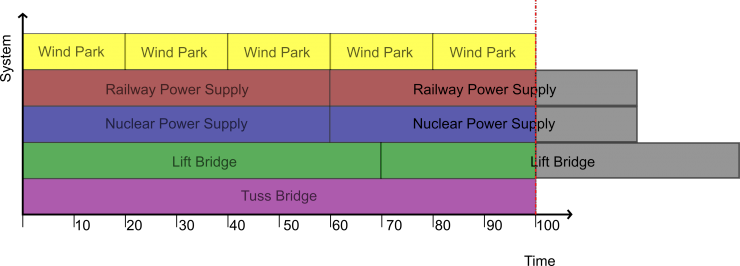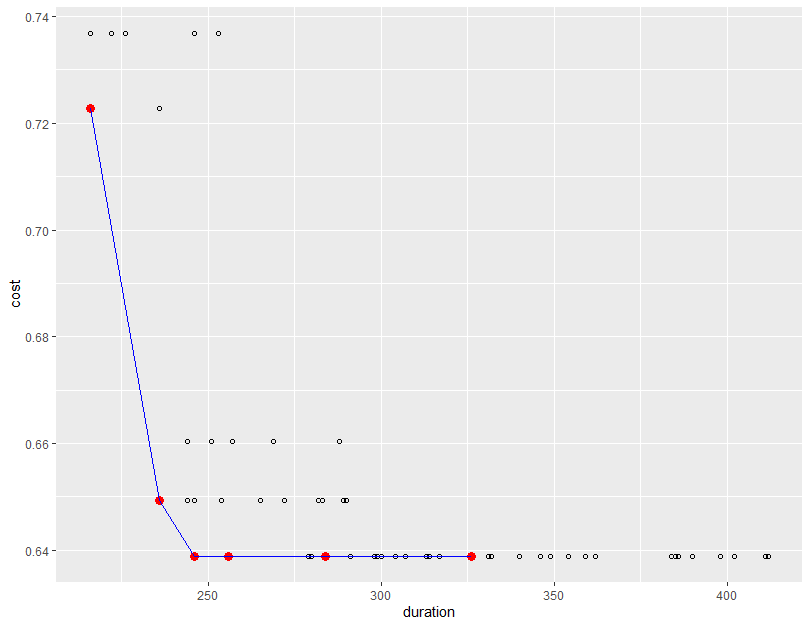Life Cycle Assessment provides a factual analysis and a good forecast of the environmental impact of a system over its entire lifetime. This makes it possible to identify and quantify the flow of energy and materials used in every stage of the life cycle of the system and make conclusions based on a comparison of the results. The integrated system being discussed is based on four subsystems namely the Railway Power Supply System, the Steel Railway Truss Bridge, the Offshore Wind Farm, and the Nuclear Power Plant which interact with each other.
The goal of this LCA is to assess the energy consumption and emission of hazardous gases such as CO2, NOx, and SO2 by the integrated system. To do this, a cradle to grave approach is adopted where the energy consumption and the emission of aforementioned hazardous gases by the system from the raw material procurement stage to the decommissioning are estimated for a lifetime of 100 years.

The figure shown below depicts the designed average life span of the integrated system. Of which, wind park has the least overall life span and requires more frequent replacement every 20 years. The railway power supply system, as well as the nuclear power plant, has a designed life span of 60 years which will be renewed once in the total lifetime of the integrated system. The vertical lift bridge has a life span of 70 years, will be renewed once in the overall lifespan of the integrated system. However, the truss bridge has a designed life span of 100 years and requires no replacement with the lifetime of the integrated.
The de

The above diagram shows, the availability of the different subsystem over a year. More details about the maintenance strategies and availability can be found here.
The cost of GHG emissions and energy consumed is calculated by assigning a certain cost to each of the emissions and energy consumed.
|
Cost |
|
|
Energy |
0.128 |
|
CO2 |
26 € per metric ton |
|
SO2 |
85 € per metric ton |
| NOx |
42 € per metric ton |
To perform the LCA of the system, a function was established that calculated the total amount of energy expended, GHG emitted, and the amount of raw materials required for the construction and maintenance of the system. To optimize the cost of greenhouse gases emitted and energy consumed, the following parameters of the subsystems varied.
- Height of monopile foundation cum support structure
- Spacing between the poles of the railway power supply system
- Width of the lift span of the vertical lift bridge
The above three parameters were chosen as varying to achieve optimized cost. In the case of wind turbines, reduced cost can be achieved by pragmatically opting for sites with shallow water depth than the ones with deep ones. Similarly, increasing the spacing between the poles of the railway power supply system would result in, reduced number of poles which in turn results in reduced consumption of concrete leading to less overall cost. Likewise, in the case of the vertical lift bridge, the width of the lift span was chosen as the varying parameter since the site parameters( such as the width of the river) are constant, it will be more practical to control the width of the lift span in achieving optimized cost.
|
Parameter |
Minimum value(m) |
Maximum value(m) |
|
Height of monopile |
30 |
50 |
|
Spacing between poles |
50 |
60 |
|
Width of lift span |
10 |
30 |
The following table shows the cost of total energy consumed and the emissions of the integrated system.
| Factor | Amount |
| Energy | 4956662929 kWh |
| CO2 | 1657913 t |
| NOx | 7190.522 t |
| SO2 | 15085.72 t |
| Total cost | 0.6791429*10^9 € |
The following graph shows the relation between the duration and the total cost for the two integrated systems.
1. Energy integrated system
2. Bridge- railway power supply integrated system
From the above two graphs, it can be inferred that as the duration between the interventions increases, the total cost considerably reduces. This can be attributed to the fact that shortening the duration between the interventions would necessitate expediting the repair processes which in turn would result in increased expenses on machinery and labour for the same


